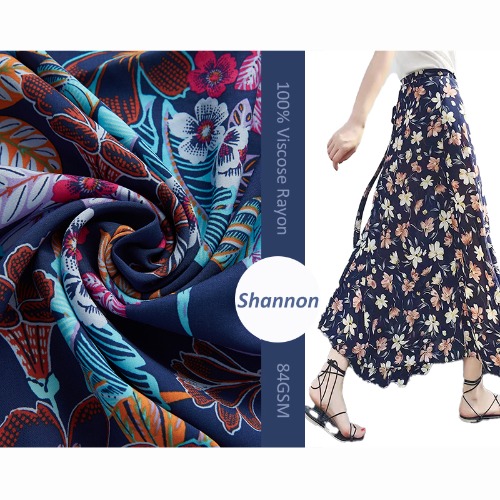Choosing exotic fabric involves considering various factors, such as the intended use, fabric composition, design, and care requirements. Here are some steps to help you choose exotic fabric:
Determine the Purpose: Consider the purpose of the fabric. Are you looking for fabric for clothing, home decor, accessories, or any other specific project? This will help narrow down your options and guide your fabric selection.
Research Exotic Fabrics: Explore different types of exotic fabrics available in the market. Some examples of exotic fabrics include silk, velvet, brocade, lace, organza, chiffon, batik, ikat, jacquard, and many more. Learn about their characteristics, origins, and cultural significance. Understanding the unique qualities of each fabric will assist you in making an informed decision.
Consider Fabric Composition: Exotic fabrics can be made from various materials such as silk, cotton, wool, linen, rayon, polyester, or blends. Consider the composition of the fabric and how it aligns with your preferences and the intended use. For example, silk is known for its luxurious feel and drape, while cotton is breathable and versatile.
Evaluate Quality: Examine the quality of the fabric. Look for well-constructed fabrics with even weaves, smooth finishes, and vibrant colors. Check for any flaws, inconsistencies, or signs of poor craftsmanship. High-quality exotic fabrics will typically have better durability and a more luxurious appearance.
Consider Design and Pattern: Exotic fabrics often feature unique patterns, motifs, or prints that reflect the culture or origin of the fabric. Consider the design elements and how they align with your aesthetic preferences and project requirements. Decide whether you want a bold and vibrant pattern or a more subtle and delicate design.
Assess Care Requirements: Different exotic fabrics have specific care instructions. Consider the care requirements of the fabric you are interested in, including whether it requires dry cleaning, hand washing, or specific temperature settings for washing and ironing. Ensure that you are willing and able to properly care for the fabric to maintain its quality and longevity.
Seek Expert Advice: If you are unsure about choosing exotic fabric, consult with fabric experts, designers, or knowledgeable salespeople. They can provide guidance based on their expertise and help you select the most suitable fabric for your needs.
Consider Budget: Exotic fabrics can vary in price depending on their rarity, quality, and production process. Determine your budget and explore fabric options within that range. Keep in mind that some exotic fabrics may be more expensive than others due to their uniqueness and craftsmanship.
Besides,Exotic fabrics encompass a wide range of unique and distinctive textiles that are often associated with different cultures, regions, or traditional craftsmanship. While the classification of exotic fabrics can be subjective and varied, here are some common categories based on their characteristics, origins, and cultural significance:
Silk Fabrics:
Silk Satin: A smooth and lustrous fabric with a glossy surface and a dull back, often used for elegant eveningwear, lingerie, and accessories.
Silk Chiffon: A lightweight, sheer fabric known for its delicate drape, often used in flowing dresses, scarves, and bridal gowns.
Silk Brocade: A rich, decorative fabric featuring raised patterns or motifs woven into the fabric, commonly used for traditional garments and upholstery.
Velvet Fabrics:
Silk Velvet: A luxurious and soft fabric with a dense pile, commonly used for eveningwear, drapery, and upholstery.
Devoré Velvet: A textured fabric created by chemically removing the pile in a pattern, resulting in a contrasting design and often used in fashion and home decor.
Batik Fabrics:
Batik: A fabric created through a traditional wax-resist dyeing technique, where patterns and designs are applied using wax before dyeing, producing vibrant and intricate designs. Batik fabrics are commonly used in clothing, quilting, and home decor.
Ikat Fabrics:
Ikat: A fabric made using a tie-dye technique where the yarns are dyed before weaving, resulting in blurred or feathered designs. Ikat fabrics are often found in traditional garments, upholstery, and home decor.
Lace Fabrics:
Chantilly Lace: A delicate and sheer lace fabric featuring intricate floral patterns, commonly used in bridalwear, lingerie, and eveningwear.
Guipure Lace: A heavy and textured lace fabric with bold designs, often used in fashion and home decor.
Ethnic Textiles:
African Wax Prints: Colorful and vibrant cotton fabrics featuring wax-resist prints, commonly associated with African cultures and used in traditional garments, accessories, and home decor.
Indian Block Prints: Hand-blocked cotton fabrics with intricate designs, created using wooden blocks and traditional printing techniques. Indian block prints are popular for clothing, quilting, and home decor.
Traditional Textiles:
Scottish Tartan: A woven fabric featuring traditional Scottish plaid patterns, associated with Scottish heritage and often used in kilts, scarves, and home decor.
Japanese Kimono Fabric: Various types of silk, cotton, or synthetic fabrics featuring traditional Japanese motifs and designs, used in the creation of kimonos and other garments.
Embroidered Fabrics:
Embroidered Silk: Silk fabrics embellished with intricate embroidery, often using silk threads, metallic threads, beads, or sequins. Embroidered silk fabrics are used in couture fashion, eveningwear, and home decor.



 English
English 中文简体
中文简体














